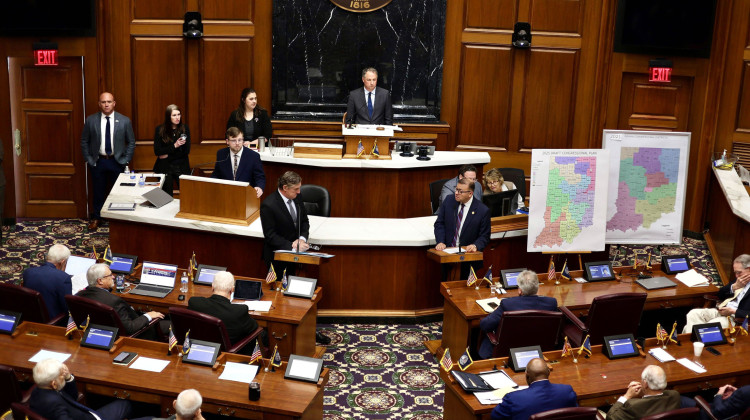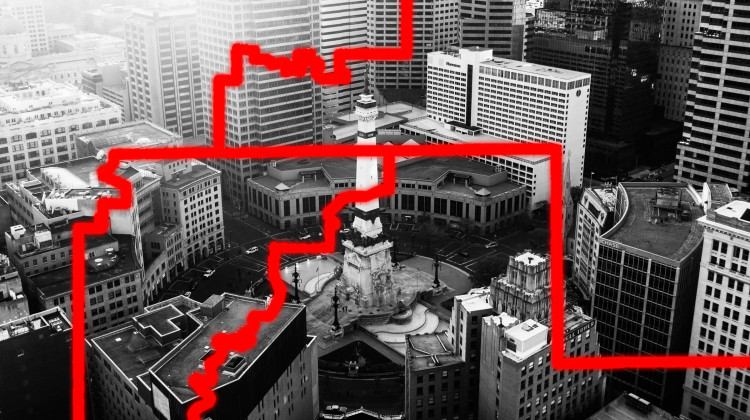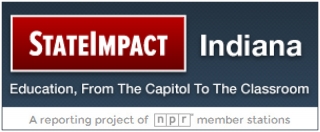INDIANAPOLIS (AP) — Two men in bright yellow safety vests stroll through a rundown neighborhood where boarded-up houses and padlocked storefronts stand as silent witnesses to a wave of street violence that threatens to taint the reputation of Indiana's capital city.
As they trade small talk with women and children sitting on their porches, the men from the Ten Point Coalition aren't just being friendly. They're trying to keep people from killing each other — part of a broad effort to tamp down the bloodshed using methods old and new, proven and unproven.
The number of homicides in Indianapolis is increasing at an alarming rate, putting the city on pace to have its deadliest year in at least eight years. Already ranked 22nd on the FBI's list of deadliest cities, the city could move up and rival its 162 killings in 1998, the worst year on record, if the hot summer months accelerate the violence as expected.
The number of homicides hit 60 this week and was expected to climb by at least two more Friday following a shooting on the city's east side.
"We have a threat and it's clear to me that we just don't quite get it yet," Police Chief Rick Hite told reporters minutes before he joined a circle of prayer for the violence to stop.
The statistics are a blemish on a city better known for its hospitality, business-friendly environment and well-received hosting of the 2012 Super Bowl. Leaders desperate to stop the bloodshed are struggling to find a solution.
Mayor Greg Ballard has met with gang leaders and city officials have proposed about $29 million a year in tax increases to add nearly 300 officers to the police force by 2018. Police have beefed up street patrols, hosted neighborhood meetings and expanded the presence of McGruff the Crime Dog in classrooms to reach kids before they drift into deep trouble.
Members of the Ten Point Coalition, a faith-based group of ministers and community leaders, have targeted two of the most troubled ZIP codes with regular visits in hopes of steering young people down a better path.
But the numbers keep climbing.
Public-safety officials have repeatedly said that roots of the city's violence run back through decades of poverty and broken homes and that the problem is too big for police to handle alone.
"I think sometimes everybody wants some magic approach that's going to do away with it in six months," said Public Safety Director Troy Riggs. But, he added, "This didn't happen overnight or over the last decade."
Indianapolis has spent decades reinventing itself from a sleepy place derisively nicknamed "Naptown" into an urban mecca that has world-class museums and hosts large conventions and national sporting events. Its unemployment rate ranks among the bottom third among U.S. metropolitan areas, and the city's suburbs are some of the fastest-growing communities in the country.
That makes the rising number of homicides even more startling.
Columbus, Ohio, a Midwestern city of similar size, had 92 slayings in 2013, compared with 125 in Indianapolis, and has had 40 so far this year. Chicago, with a population more than three times that of Indianapolis, had 414 killings last year and 115 through May 18.
Most of the Indianapolis slayings have involved criminals killing other criminals. That prompted members of the Ten Point Coalition to host a recent church dinner for gang members, who talked about what their lives are like.
"Some of these young men talked about basically having to raise themselves. One said his father was a drug addict and his mother was an alcoholic, so all he knew was street life," said the Rev. Charles Harrison, president of the coalition. It's a familiar story. One gang member spoke of having to take care of his mother and baby brother since he was 13 years old.
Besides Ballard's proposed tax increase, authorities have discussed adopting a strict curfew to keep young people off the streets late at night and creating programs for community policing, summer jobs and after-school athletics. Other proposals include offering parenting classes and making a $75,000 investment in the city's 211 hotline to connect families with social services.
But those who work the streets say those ideas are just part of the puzzle.
Derek Jefferson, a city pastor who lost two close relatives to shootings this year, believes police need to become part of the neighborhood hot spots.
"Police are so stuck in their cars. They are so stuck in their offices ... they need to get out of their cars and walk the streets," he said.
For others, the solution is jobs.
"Jobs would be major incentive to keep these young men from hanging out on the street," said Harrison, of the Ten Point Coalition. "They need jobs with livable wages."
The Rev. Horatio Luster, another member of the Ten Point Coalition, said police, community centers and churches are doing their part. What hasn't been tried enough, he said, is working with individuals instead of groups.
"We need to change the way these kids are thinking," he said.
 DONATE
DONATE









 Support WFYI. We can't do it without you.
Support WFYI. We can't do it without you.